Recent Articles
Popular Makes
Body Types
2022 BMW X4 Road Test and Review
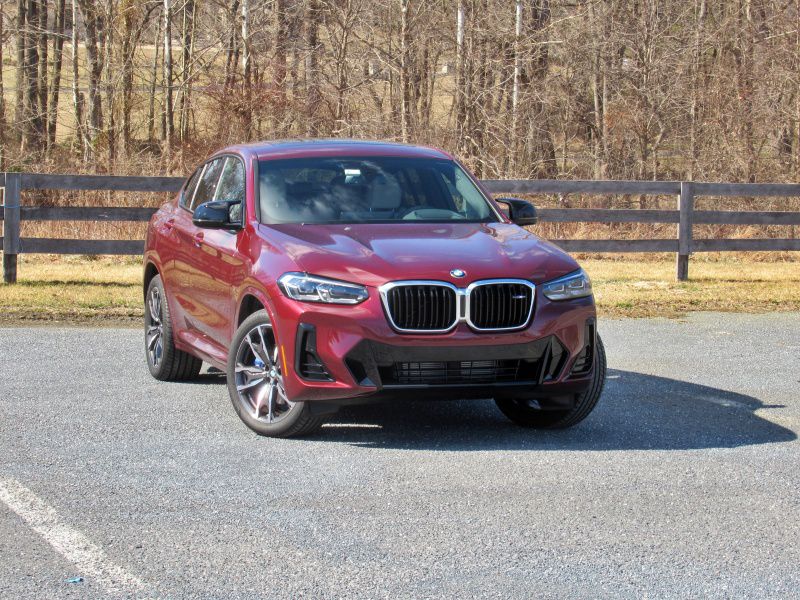
2022 BMW X4 M40i ・ Photo by Brady Holt
Fifteen years ago, BMW took the X5 mid-size crossover, made a sportier version with less cargo space and a higher price, and offered it up for sale. “Its apparently random combination of skills and strengths seemed about as logical as crossbreeding your chocolate Labrador with a ham radio,” read one early review of this BMW X6.
And people bought it. The X6 sparked a flurry of imitators in this new “SUV coupe” segment, and BMW eventually applied the same formula to its compact crossover — creating the X4 out of the X3 in 2015. The 2022 BMW X4 is part of the model’s second generation, and it’s newly updated this year with revised styling and technology. For this review, we spent a week in this compact luxury SUV to see what it’s like to live with the X4. Keep reading to find out what we learned and see if the X4 sounds like the right choice for you. Prices start at $51,800.
An 'SUV Coupe'
If you haven’t kept up with the proliferation of “SUV coupes,” the X4 might look confusing. It has four doors and similar proportions to the boxy X3. The difference is around the side and back, where the hatchback-style roof slopes gently toward the rear of the vehicle. The rear windshield stops far enough back from the rear of the vehicle, the X4 almost looks like a raised sedan. And unlike normal SUVs (and even some SUV coupes), there is no rear windshield wiper.
The X4 has a few other tweaks from the X3. It’s slightly lower and slightly wider, providing a more assertive stance. But it keeps the X3’s upright front end. That’s the same design approach adopted by competitors like the Audi Q5 Sportback and Mercedes-Benz GLC Coupe, in contrast with similarly shaped luxury suvs like the Porsche Macan that look sportier from nose to tail. But if you like the X3’s classically BMW front end, just not the upright rear end of a traditional SUV, the X4 might be just what you need.
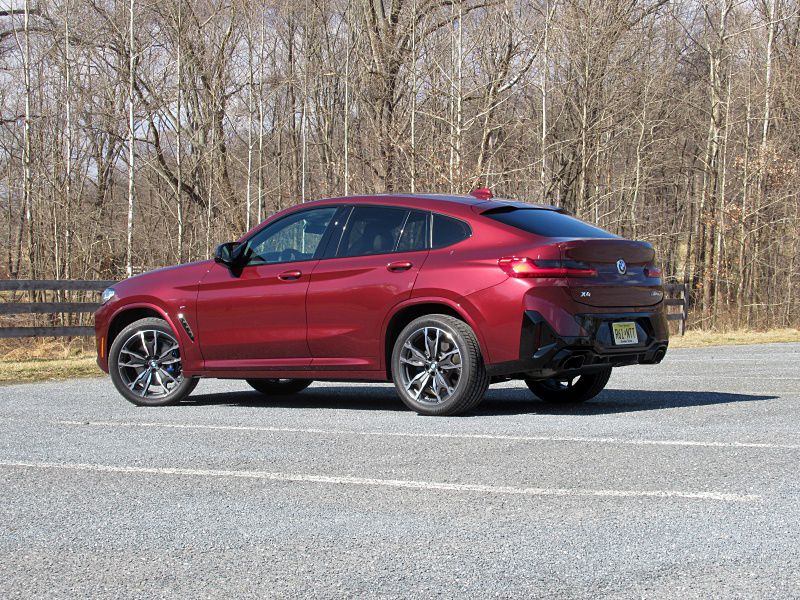
Photo by Brady Holt
Conservative Interior
BMW didn’t make the X4’s interior any wilder than the X3’s. Both SUVs share a conservatively attractive and generally well-finished dashboard. Critics could even accuse the interior of being dull, especially given that the X4 is supposed to be the sportier-looking sibling, though we see merit in BMW’s approach of well-executed minimalism.
Not everything is perfect: The interior door pulls have a roughly finished edge, and we thought the SUV’s keyfob felt disappointingly plasticky and insubstantial. But overall, the X4 is quietly classy and upscale inside, with nice materials that fit together well. And as we’ll discuss, the in-dash technology is another pleasant surprise.
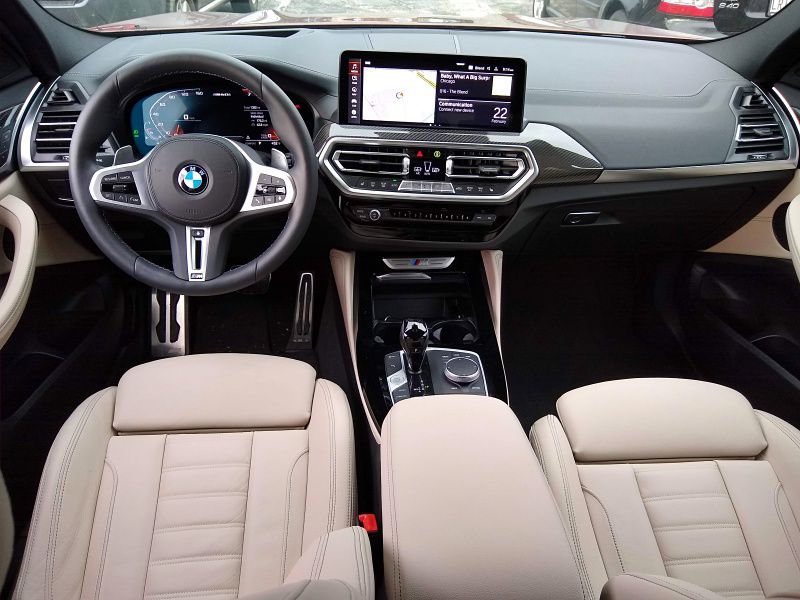
Photo by Brady Holt
Well-Sorted Infotainment
BMW created the modern infotainment system two years ago, and it was a mess. Called iDrive, it replaced dashboard buttons with cumbersome menus operated through a control wheel. Now, however, the X4 stands out as a welcome respite from overly complex luxury interiors.
Newly updated this year, the 2022 X4 has a standard 12.3-inch touchscreen infotainment system. And it’s a model of simplicity, with big, clear icons and fonts; fast responses; and a welcome collection of physical controls for basic functions. You can still use the console-based controls like iDrive of yore, and even that works better than before, but we preferred the alternative ways to interact with the system. The X4 also supports Android Auto and Apple CarPlay smartphone integration. One nifty BMW innovation is called gesture control: Make certain motions near the touchscreen, and the car will recognize what you’re doing. It’s a little gimmicky, and we once activated it by mistake while merely reaching across the car. But overall, while many luxury suvs try to jump out and dazzle you with flashy technology, BMW keeps things clear and simple.
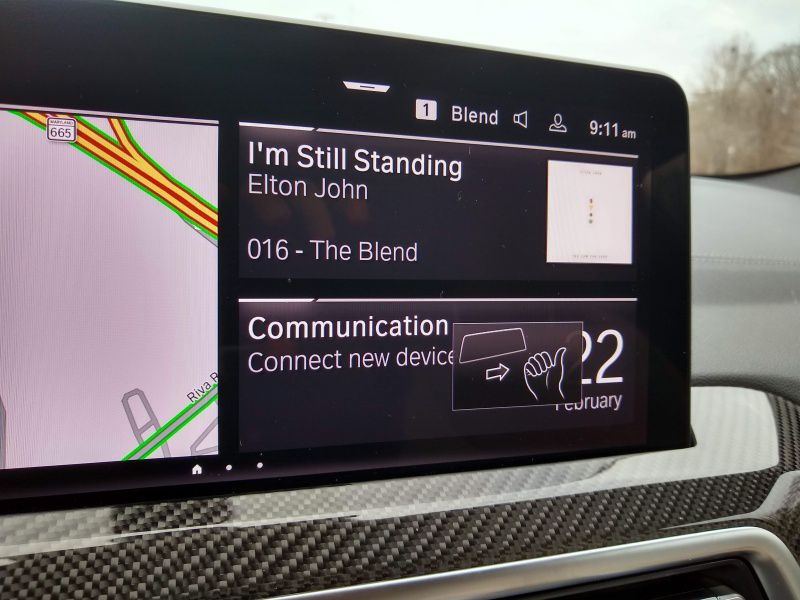
Photo by Brady Holt
The Cargo Question
The BMW X3 is one of the roomiest compact luxury suvs, with 28.7 cubic feet behind its rear seat and 62.7 cubic feet with the rear seat folded down. The X4 is a little longer and wider than the X3, but the lower roof cuts sharply into this cargo capacity.
The result is 18.5 cubic feet behind the rear seat and 50.5 cubic feet with the rear seat folded. That means the X3 has 55 percent more luggage space with the backseat in use and 24 percent more total cargo capacity. That’s not a negligible difference. On the other hand, if you’re comparing the X4 to an actual coupe or sedan, that’s a massive cargo hold. It also edges out the BMW 4 Series Gran Coupe, which is a versatile five-door liftback version of the 3 Series sedan. The X4 also beats the 4 Series for passenger space — including an adult-habitable rear seat — and it keeps an SUV-height driving position.

Photo by Brady Holt
Agile and Quick
The base X4 30i has a 2.0-liter turbocharged four-cylinder engine with 248 horsepower and 258 lb-ft of torque. We tested this engine in the X3, and it proved eager, smooth, and richer-sounding than some competitors’ four-pots. Our X4 test vehicle was the M40i, featuring a 3.0-liter six-cylinder turbo with 382 hp and 365 lb-ft of torque. While the four-cylinder sounds pleasant, the six-cylinder accelerates with a rich melodic crackle without being objectionably noisy. For maximum performance, the ultra-wild X3 M cranks the same 3.0-liter to 473 hp and 457 lb-ft in its base form and 503 hp and 479 lb-ft on the Competition model.
BMW complements these engines with a tautly tuned suspension with supreme composure. Neither bumpy roads nor sharp curves upset the X4. The steering isn’t razor-sharp like an Alfa Romeo Stelvio’s, but it compares well to most modern luxury suvs. Like classic BMWs, it has a balanced rear-wheel-drive-based platform, though unlike the X3, the X4 has all-wheel drive as standard equipment. BMW tunes the X4 to be slightly sportier than the X3, but the company says the subtle differences are most apparent on a racetrack or in other performance driving.
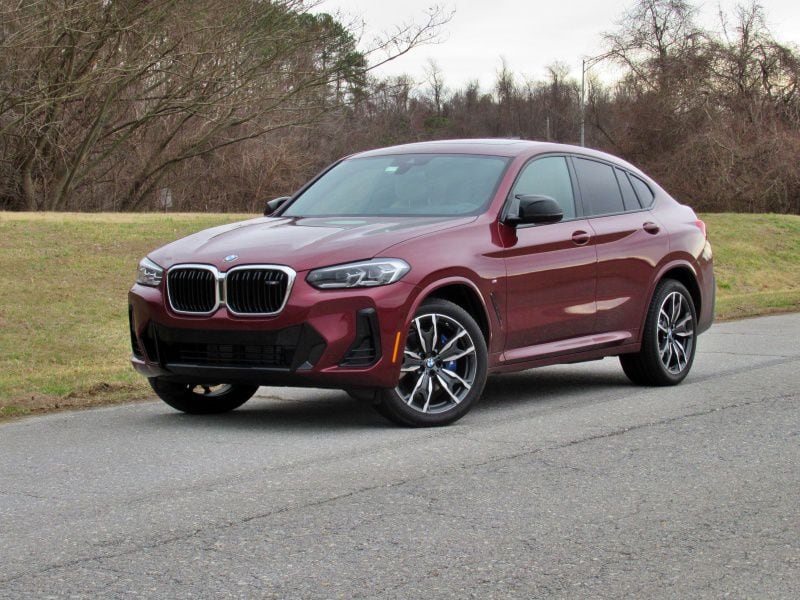
Photo by Brady Holt
Excellent Gas Mileage
The X4 30i gets an EPA-estimated 21 mpg in the city, 28 mpg on the highway, and 24 mpg combined. That’s quite good for a peppy luxury suv and the same as the X3.
We’re even more impressed with the M40i, which falls only about 1 mpg behind — 21 mpg city, 26 mpg highway, and 23 mpg combined — despite its extra 134 horsepower. Even more remarkable, our X4 M40i test vehicle averaged 27 mpg during a weeklong test. The six-cylinder engine benefits from a mild-hybrid setup, in which a small electric motor helps out with both acceleration and fuel economy. BMW also lets you choose among several driving modes that include the fuel-saving Eco Pro, and then customize each of those driving modes further. The max-performance X4 M returns a mere 15 mpg city, 20 mpg highway, and 17 mpg combined.
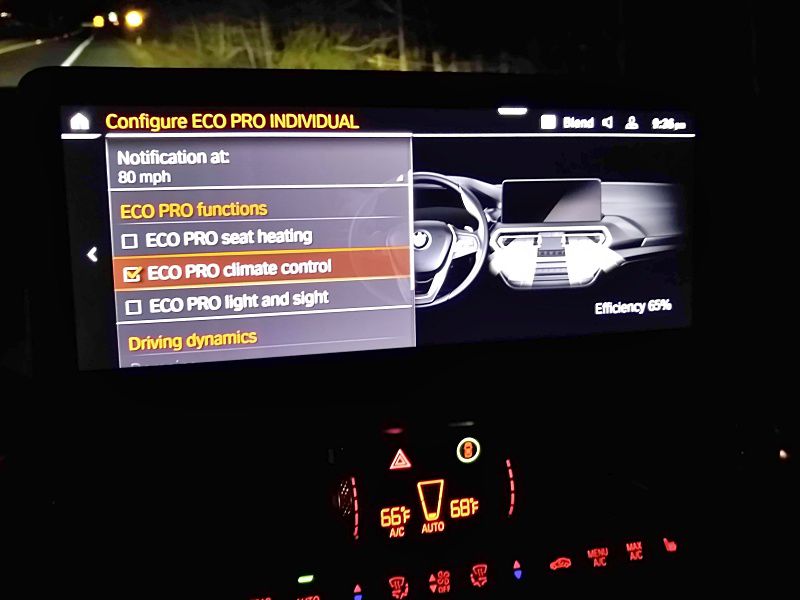
Photo by Brady Holt
More Expensive Than the X3
The 2022 BMW X4 30i starts at $51,800, a steep jump from the base X3’s $43,700. In part, you’re paying for extra features: Unlike the X3 (pictured on this page), every X4 includes all-wheel drive and a sunroof, which would push the X3 to $47,050. You pay the remaining $4,750 premium mainly to get different styling.
Similarly, the X4 M40i starts at $62,400 while the most comparable X3 runs $57,800, and the X4 M costs $73,600 versus the X3 M’s $70,100 starting price. Our X4 M40i test vehicle came to $67,540 with options that included genuine leather upholstery, heated front seats, extra-cost paint, and 20-inch wheels that replaced the standard 19-inchers. Overall, we’re impressed with the X4’s long list of standard features, and BMW didn’t go overboard while pricing its options. But even the X3 costs more than most of its competitors, and the X4 is even more expensive.

Photo by Brady Holt
The Rest of the Class
The X4’s most direct rivals in the SUV coupe class are the Audi Q5 and SQ5 Sportback, the Mercedes-Benz GLC Coupe, and the Infiniti QX55. The X4 is sportier and more fun to drive than any of them. In addition to your own stylistic tastes, you’d pick the Audi for the flashiest infotainment technology (called Virtual Cockpit), the Mercedes for the most opulent interior, and the Infiniti for the lowest price and most cargo space.
We’d also shop the X4 against some other stylish, sporty compact crossovers outside the SUV coupe segment: the Alfa Romeo Stelvio, Genesis GV70, Jaguar F-PACE, and Porsche Macan. These SUVs brim with at least as much personality as the X4, and they also offer outstanding driving manners. Except for the Porsche, they also have more cargo room than the X4, but without giving the impression that was a design priority.
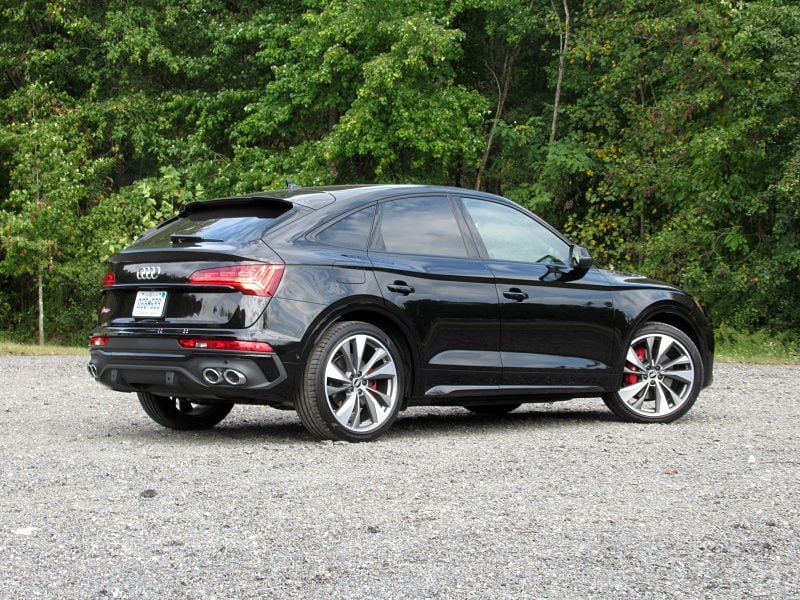
Photo by Brady Holt
When ‘Practical’ Is a Dirty Word
Generally when we test an SUV, practicality is a matter of high praise. Spaciousness and sensible packaging are welcome traits. And the excellent BMW X3 (which we review here) has both, along with every last one of the X4’s other objective virtues.
But a spacious, sensible packaged SUV looks like a box — and it risks looking too sensible for some tastes. One measure of luxury is to flaunt unnecessary extravagance, and intentionally paying more for a less-roomy version of the BMW X3 can check that box. Or maybe you just like how the X3 drives but prefer how the X4 looks, and the price difference isn’t a factor. There’s not one objective reason to choose the X4 over the X3. But if you’re drawn to it anyway, you’re getting a fantastic piece of engineering excellence in a less ordinary wrapper.
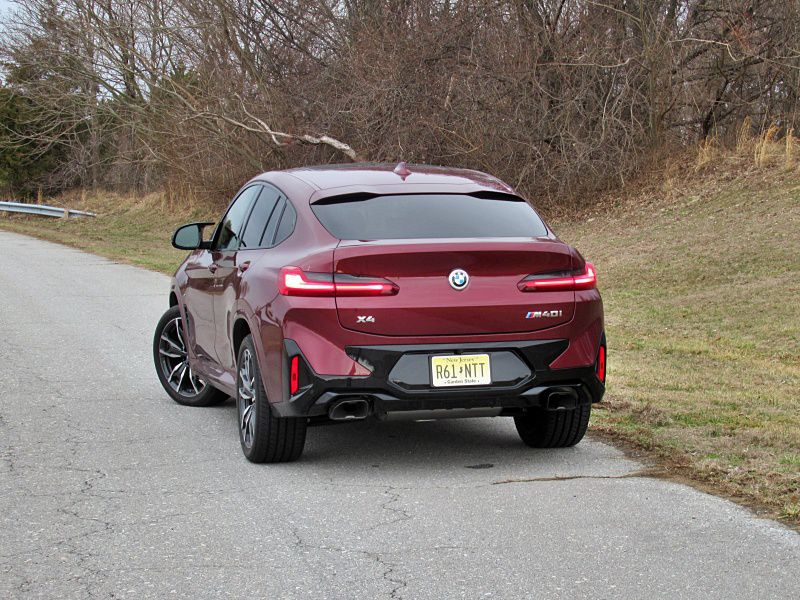
Photo by Brady Holt